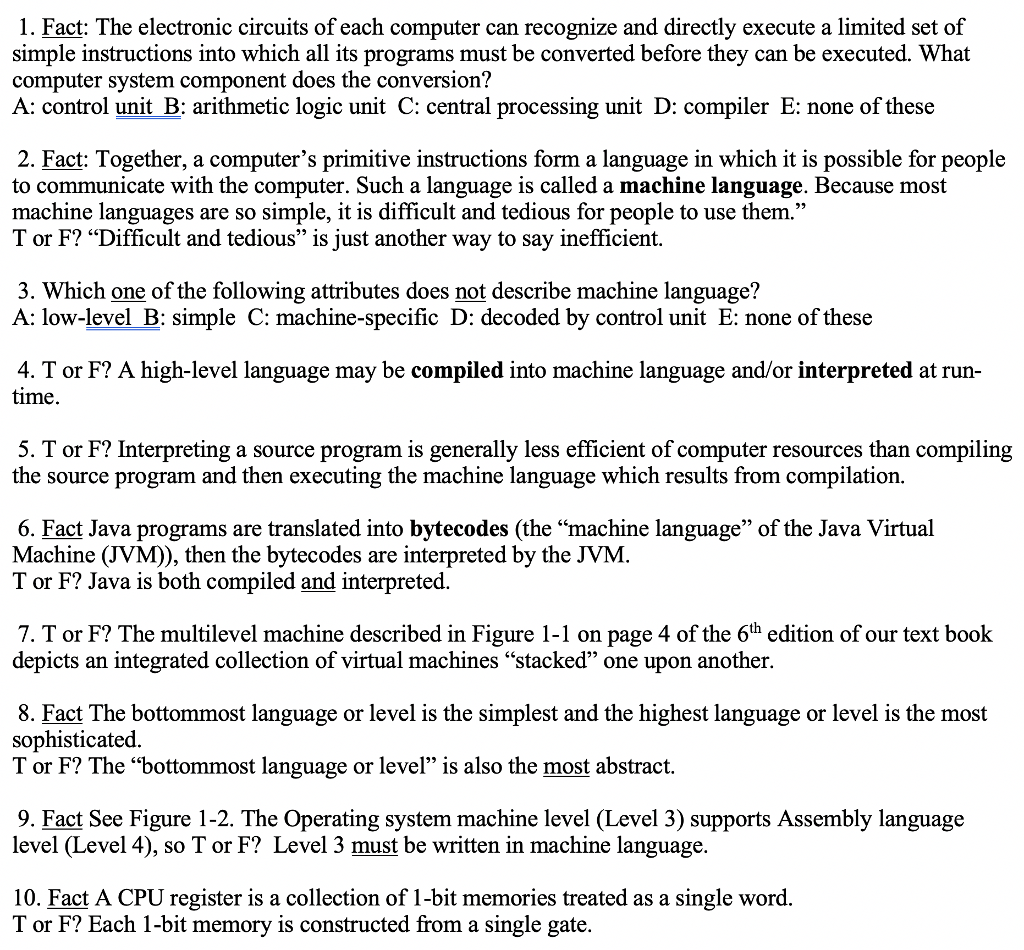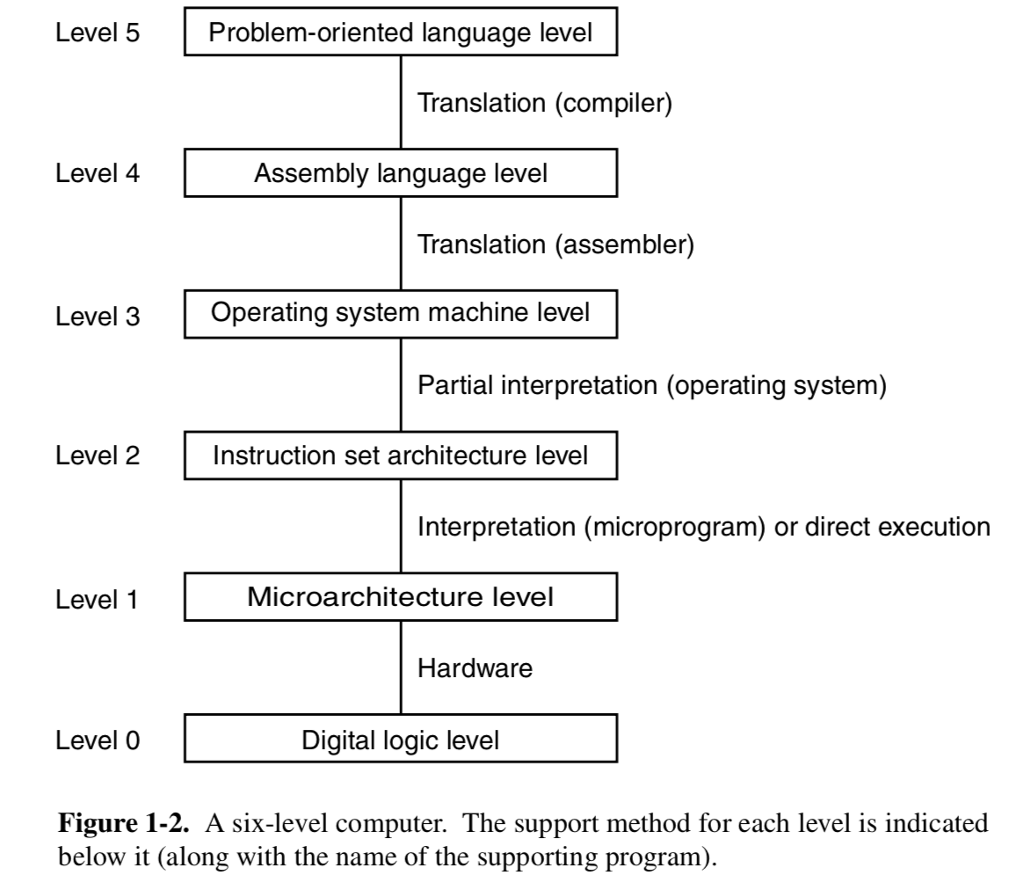Answered step by step
Verified Expert Solution
Question
1 Approved Answer
Quick computer science questions. Answer all 1-10 f or positive rate. / 1. Fact: The electronic circuits of each computer can recognize and directly execute
Quick computer science questions. Answer all 1-10 for positive rate.
/

1. Fact: The electronic circuits of each computer can recognize and directly execute a limited set of simple instructions into which all its programs must be converted before they can be executed. What computer system component does the conversion? A: control unit B: arithmetic logic unit C: central processing unit D: compiler E: none of these 2. Fact: Together, a computer's primitive instructions form a language in which it is possible for people to communicate with the computer. Such a language is called a machine language. Because most machine languages are so simple, it is difficult and tedious for people to use them. T or F? "Difficult and tedious" is just another way to say inefficient. 09 3. Which one of the following attributes does not describe machine language? A: low-level B: simple C: machine-specific D: decoded by control unit E: none of these 4. T or F? A high-level language may be compiled into machine language and/or interpreted at run time 5. T or F? Interpreting a source program is generally less efficient of computer resources than compiling the source program and then executing the machine language which results from compilation 6. Fact Java programs are translated into bytecodes (the "machine language" of the Java Virtual Machine (JVM)), then the bytecodes are interpreted by the JVM T or F? Java is both compiled and interpreted, 7. T or F? The multilevel machine described in Figure 1-1 on page 4 of the 6th edition of our text book depicts an integrated collection of virtual machines "stacked" one upon another. 8. Fact The bottommost language or level is the simplest and the highest language or level is the most sophisticated. T or F? The "bottommost language or level" is also the most abstract. 9. Fact See Figure 1-2. The Operating system machine level (Level 3) supports Assembly language level (Level 4), so T or F? Level 3 must be written in machine language 10. Fact A CPU register is a collection of 1-bit memories treated as a single word. T or F? Each 1-bit memory is constructed from a single gate. Level 5 Problem-oriented language level Translation (compiler) Level 4 Assembly language level Translation (assembler) machine level Partial interpretation (operating system) Level 3 Operating system Level 2 Instruction set architecture level Interpretation (microprogram) or direct execution Level 1 Microarchitecture level Hardware Level 0 Digital logic level Figure 1-2. A six-level computer. The support method for each level is indicated below it (along with the name of the supporting program
Step by Step Solution
There are 3 Steps involved in it
Step: 1

Get Instant Access to Expert-Tailored Solutions
See step-by-step solutions with expert insights and AI powered tools for academic success
Step: 2

Step: 3

Ace Your Homework with AI
Get the answers you need in no time with our AI-driven, step-by-step assistance
Get Started


